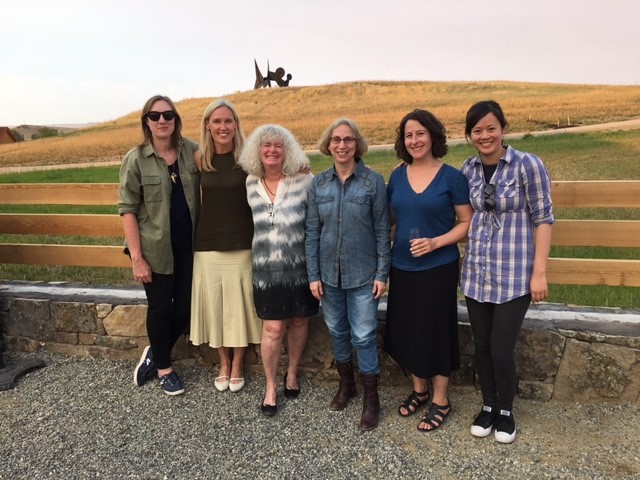The Power of Arts in Civic Engagement
July 25, 2017
Although most Americans take pride in the diverse mosaic of people that makes up the United States, the past year has thrown into stark relief the divides facing our communities and our nation. What role can arts and culture play in both bringing communities together and in amplifying dissenting views? As a board member of Yerba Buena Center for the Arts and former Executive Director of the David Brower Center, I have long been involved in organizations that honor and celebrate the role of artistic and cultural practice in effective, authentic civic engagement. Consequently, I find this question more important now than ever.
In these tumultuous times, I see daily that entrepreneurs and artists are building bridges across these political, cultural and geographical divides – including several organizations and collaboratives RPA is proud to work with. They are supporting artistic practice in consequential, often unexpected, ways to find common ground, celebrate our differences and create a more just and open society.
The United States is increasingly viewed in terms of red vs. blue; rural vs. urban. But art and artists exist everywhere, not just in elite coastal communities. This is a central belief for ArtPlace America, a funder collaborative that works to integrate art into community planning and development in both urban and rural communities all across the country. ArtPlace supports projects that bring together diverse stakeholders and sectors to develop arts-based interventions that strengthen social cohesion. One way they do this is through a 3-year grant program targeting community and economic development organizations, specifically funding arts programs in non-arts institutions to prove the value of arts in building and strengthening communities.
In addition to highlighting the creativity that exists in communities across the country, it’s also important to recognize the physical, financial and cultural barriers that often prevent many communities from accessing art. Understanding these barriers was a priority for Tippet Rise Art Center, which hosts classical musical performance and exhibits large-scale, outdoor sculptures in rural Fishtail, Montana on a 10,000 acre working ranch. For years before opening, the Tippet Rise team focused on relationship-building to ensure that the center would become an integrated part of the community. Today it’s a public asset where everyone from local students to international tourists can experience art in an informal, inexpensive and inclusive setting. Many Tippet Rise employees, native to the region, found new career pathways welcoming and befriending visiting artists and musicians. Together, they have had the opportunity to explore connections anchored in the transformative experience of bringing art, music, nature and architecture together.
Art can also be used to battle stereotypes and to provide a window into the experience of a different community. That is the idea behind Pop Culture Collaborative, a new initiative working to expand the landscape of pop culture narratives of people of color, immigrants and Muslims. Pop culture has the potential to reach audiences that may otherwise not have contact with people from different ethnic, economic, or other backgrounds. And unlike many other forms of art, which require proactive engagement, pop culture can share these stories without the traditional barriers that accompany some art experiences – meeting people where they are most comfortable in order to build cultural understanding and empathy.
Art and culture is the fabric that fortifies and informs a healthy public life, providing a vital voice of community pride and connection, of dissent, and of compassion. Leaders from all sectors point to the fundamental role creativity, imagination and empathy play in building new ways of understanding ourselves, others and our collective future. Artist Olafur Eliasson says, “giving people access to data most often leaves them feeling overwhelmed and disconnected, not empowered and poised for action. This is where art can make a difference. Art does not show people what to do, yet engaging with a good work of art can connect you to your senses, body, and mind. It can make the world felt. And this felt feeling may spur thinking, engagement, and even action.”
RPA is proud to play a role in supporting and sustaining the arts, building upon our country’s rich legacy and finding ways to catalyze new modes of public engagement and understanding. Now is a time to defend and support the arts to elevate critical issues, amplify marginalized voices, and promote community well-being. Our country is an amazing patchwork quilt, its thriving arts and culture sector is a vital thread woven through its fabric.
Back to News